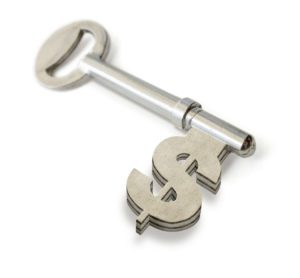
To help determine if raising your car insurance deductible is a good financial decision, you need to analyze the payback period. The payback period is how long it would take to buy back your deductible from insurance premium savings. It can be calculated in 4 simple steps and is best explained by using an example.
Assume that our friend Mr. Fancypants is paying $1000 per year for car insurance and he currently has a $250 collision deductible on his car. To save money, Mr. Fancypants wants to increase his collision deductible to $500 making his auto insurance drop to $900 per year. Is raising Mr. Fancypants collision deductible the most economical decision using the payback period method?
Step 1: Calculate Retained Risk – When you raise your deductible that means you will pay more out of your own pocket before the insurance policy starts to pay. Originally Mr. Fancypants would pay the first $250 for a collision claim but raising his deductible means he would now pay the first $500. Thus, Mr. Fancypants is retaining $250 of additional risk by increasing his deductible. (Learn more about retained risk in our prior blog article)
New Deductible – Original Deductible = Additional Retained Risk
$500 – $250 = $250 (Additional Retained Risk)
Step 2: Calculate the Savings – Since Mr. Fancypants is retaining more risk, the car insurance policy goes down to $900 per year and he saves $100 per year.
Original Premium – New Premium = Savings per Year
$1000 – $900 = $100 (Savings per Year)
Step 3: Calculate Payback Period – The payback period in this example is how long Mr. Fancypants would have to drive without having a covered collision claim to make his money back. It is calculated by dividing his additional retained risk (Step 1) by the additional savings (Step 2) for raising his collision deductible. For Mr. Fancypants, he would have to drive 2.5 years without a covered collision accident claim before he would make his money back from the savings on his policy.
Additional Retained Risk / Savings per Year = Payback Period (yrs)
$250/$100 = 2.5 years
Step 4: Compare Payback Period – Since Mr. Fancypants does not actually know how long he will drive without having a collision accident, he needs a guideline to help make a decision. A general rule of thumb is if the payback period is less than 4 or 5 years, it usually makes financial sense to increase your car insurance deductible. Since the payback period for Mr. Fancypants is 2.5 years, the payback period method suggests that he should raise his deductible.
Remember that the payback period is just one guideline for making the decision to raise your insurance deductibles. Other factors to consider would include your likelihood to submit a car insurance claim, if you have the cash to pay the higher deductible and your prior driving record just to name a few.
Have you used the payback period to determine if your car insurance deductible are the most economical? Leave a comment below.
